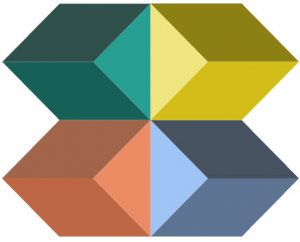1 About the Game
The Setup
Course Description
This course focuses on quality of life and sustainable futures by learning how to ask the right question as a way to understand the root of the problem and why it is an issue. Students will take an empathetic, human-centered perspective that uses Design Thinking and draws from historical precedence and current research from a variety of fields to help solve complex and persistent problems such as student mental health awareness and lack of clean drinking water. This course provides students with advanced design thinking techniques to enhance creative analysis and problem solving. Students will innovate, prototype, and test designs that address real-word problems with real-world constraints and the limitations of technology. Projects range from ways to improve everyday situations to community issues.
Course Content and Objectives
Design thinking is an iterative problem solving process that employs design techniques to gain insight for producing innovative solutions. It can be applied to virtually any type of organization or problem solving challenge.
Through projects, discussions, readings, and videos, students will learn and apply design thinking techniques to enhance creative analysis and problem solving. In interdisciplinary teams, students will directly apply what they have learned to a variety of human-centered design challenges. Students will innovate, prototype, and test designs that address real-word problems with real-world constraints. Projects address real world issues, and students will learn to identify issues that would benefit from design interventions. Students will give presentations and receive feedback as ways to sharpen their communication and storytelling skills as well as to produce a product, service, or process.
Course Goals
- Explain and internalize the methods and processes of design thinking
- Investigate problems, develop research methods, and synthesize results to form solutions
- Develop a deeper understanding of users and their interaction with the designed environment
- Understand that in addition to the creation for innovative objects and places, design can be applied to the development of new processes, services, interactions, and collaboration in a variety of fields.
- Recognize that design lends itself to an interdisciplinary approach, and that design
thinking is valuable as a means for innovative problem solving across disciplines. - Apply methods for creating physical prototypes
Learning Outcomes
- Demonstrate the ability to develop and understand empathy through the practice of observation, interviewing skills and other methods.
- Recognize how knowledge, concepts, and theories outside of the field of design are relevant to informing new approaches to design solutions.
- Examine a wide range of problems confronting society and identify inter-dependencies between context practice and methods.
- Exhibit the ability to be creative, collaborative and divergent thinkers who can generate and visually communicate multiple ideas.
